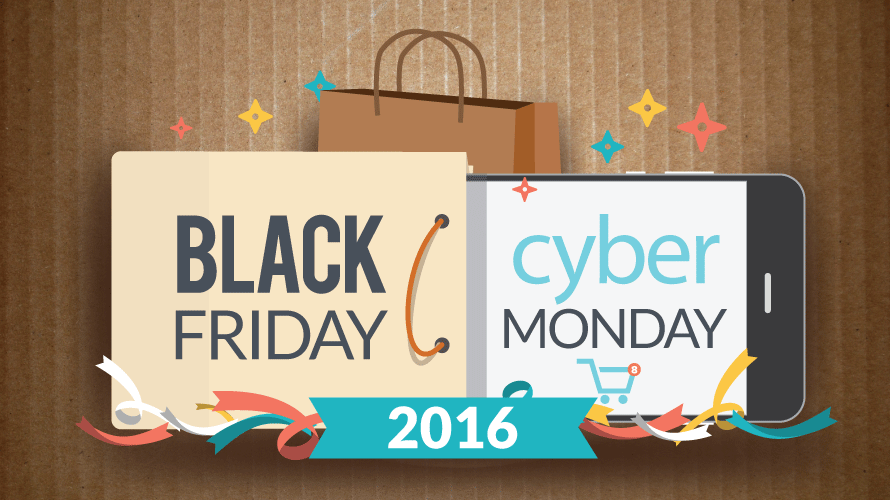
You know that Black Friday and Cyber Monday 2016 set new records for total digital commerce and mobile commerce. What you probably don’t know is how.
We think we do.
We analyzed tens of billions of impressions, clicks, taps, purchases, and app installs to help you understand what the best mobile marketers did — weeks in advance and during the actual holiday — to prepare for the holiday shopping bonanza.
In this blog post, you’ll find:
- Why m-commerce is growing 3X faster than digital commerce overall
- 4 critical steps mobile marketers took to break Thanksgiving weekend sales records
- 5 significant insights into app categories that win or lose on holidays
- 1 absolutely key difference between iOS and Android owners
Let’s get started …
M-commerce growing 3X faster than overall sales
Black Friday 2016 set a new U.S. record with $3.34 billion in total digital sales. It also set a new mobile record, with over $1.2 billion in mobile revenue on a single day.
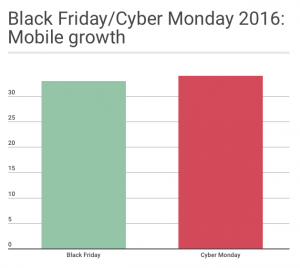 That’s 33% growth for mobile over Black Friday 2015.
That’s 33% growth for mobile over Black Friday 2015.
But the new Black Friday record didn’t stand for long — only two days. Cyber Monday immediately displaced it as the biggest digital shopping day in U.S. history with $3.4 billion in sales, up 12.1%.
Again, mobile sales growth outpaced overall digital sales, jumping 34% and hitting $1.2 billion.
How did mobile marketers set the record?
4 ways mobile marketers achieved record performance
This record, and especially the rapid increase in mobile commerce, didn’t happen by accident. It happened because mobile marketers made it happen.
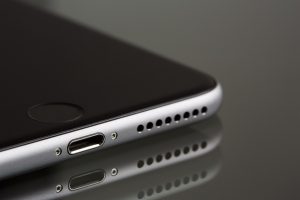 TUNE technology touches 2.2 billion devices globally, thousands of marketers use our tools measure the impact of tens of billions of clicks and taps on their ads, and we monitor Google Play and the App Store for significant changes daily.
TUNE technology touches 2.2 billion devices globally, thousands of marketers use our tools measure the impact of tens of billions of clicks and taps on their ads, and we monitor Google Play and the App Store for significant changes daily.
At TUNE, we see four ways mobile marketers contributed to these record results:
- Developing
Mobile marketers prepared app updates weeks in advance - Advertising
Marketers boosted ad spend on the highest-leverage holiday days - Messaging
Mobile marketers earned the privilege of push notifications to their best customers - Protecting
Smart marketers checked for fraudulent or low-quality ads clicks
Add it all up, and we can see clear evidence of how mobile marketers prepared for this record-breaking week.
“Retailers that have invested in mobile, email and social have seen 30 percent more sales on average and 25 percent higher average order values.”
– Adobe Digital Insights
1: Massive pre-holiday preparations
Over the 21 weeks preceding Black Friday and Cyber Monday, mobile developers updated their Android and iOS apps an average of 40,554 times each week.
In the 45th week of the year, however, app updates spiked 42% higher, to 57,623:
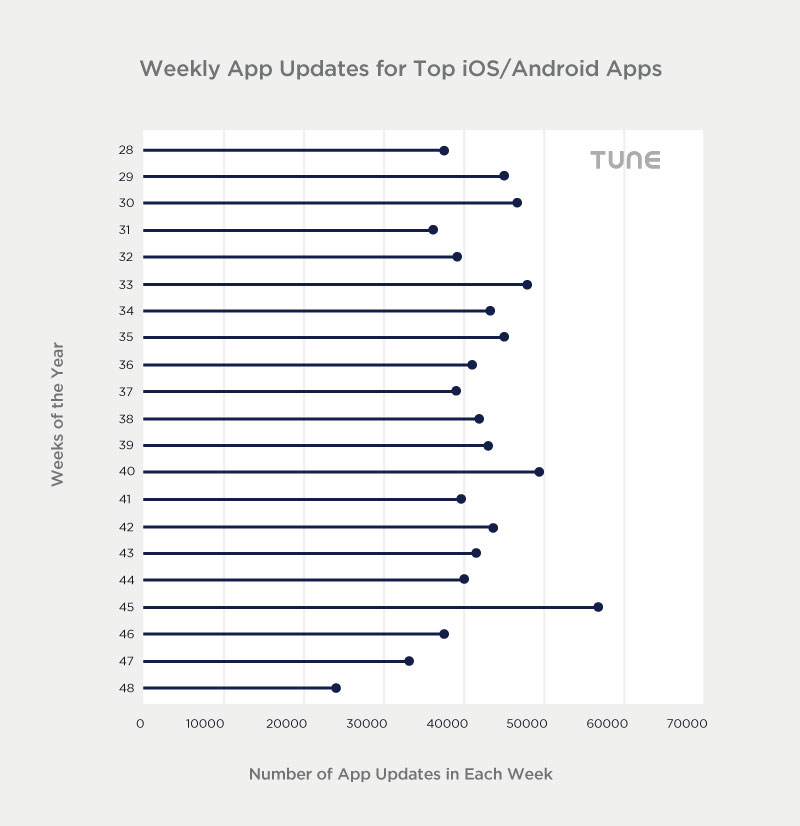
That just happened to be three weeks before Black Friday and Cyber Monday.
Why this particular week?
Mobile marketers know that app updates take some time to be approved (iOS) or sometimes have issues that need to be fixed. No one wants to have app problems during the highest-volume commerce season of the year, so they do it well before.
Each of the two weeks before Black Friday/Cyber Monday, volumes are below average. And in the actual week of Black Friday, they dropped 68% below average. A short week and a long holiday weekend has something to do with that, but clearly mobile publishers are preparing for the mobile commerce bonanza.
2: Bigger holiday-specific ad campaigns
As TUNE saw last year, marketers blow out the budget on Black Friday and Cyber Monday.
But where last year the spending was focused on the actual Friday and Monday, with double the amount of typical advertising, in 2016 marketers have spread their dollars over the entire weekend.
On three different measures, here’s what we saw on Black Friday, compared to 21 previous Fridays:
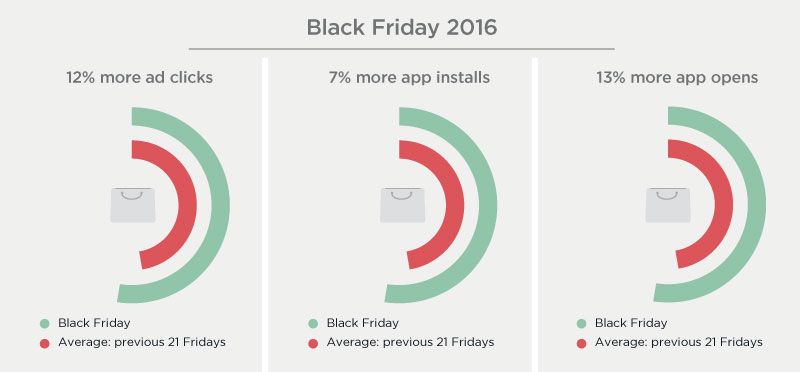
Here are the same datapoints for Cyber Monday, compared to 21 previous Mondays:
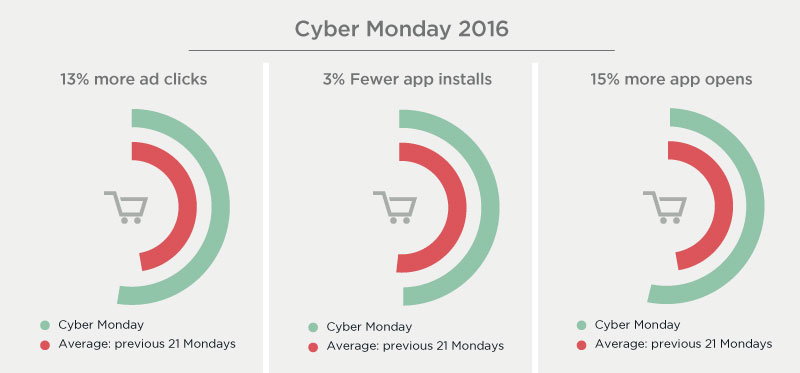
Overall, ads, clicks/taps, and app installs were up for the week, but the increase accelerated for everything but app installs on Cyber Monday.
One interesting note: in 2015, we saw more of a steep peak on Black Friday and Cyber Monday. In 2016, there’s more of a gentle slope up for the entire shopping weekend, with an additional boost on the actual holiday days.
3: Increased messaging to highest-value customers
One of the reasons brands want their apps on consumers’ phones is the immediate owned/earned access to them via push notifications and in-app messages.
On Black Friday, brands using TUNE’s in-app marketing increased their messaging 30% over average Fridays. On Cyber Monday, they took it a bit easier: a 22% increase of normal Mondays.

That engagement, over time, leads to revenue.
When you’ve earned the privilege to message your customers and use in-app messaging and push messaging judiciously and effectively, you can massively increase engagement in your mobile app — achieving up to 800% more interaction with your notifications.
4: Insightful focus on high-value ad traffic
While it’s great to have app users to message, most retailers and brands need significant ad campaigns to drive sales. That’s especially true during holiday shopping seasons.
The core challenge, of course, is that fraudulent ad clicks exist. Low-quality traffic exists. Some say it’s a $7.2 billion problem in 2016 alone. (At least that’s down from last year’s $8.6 billion.)
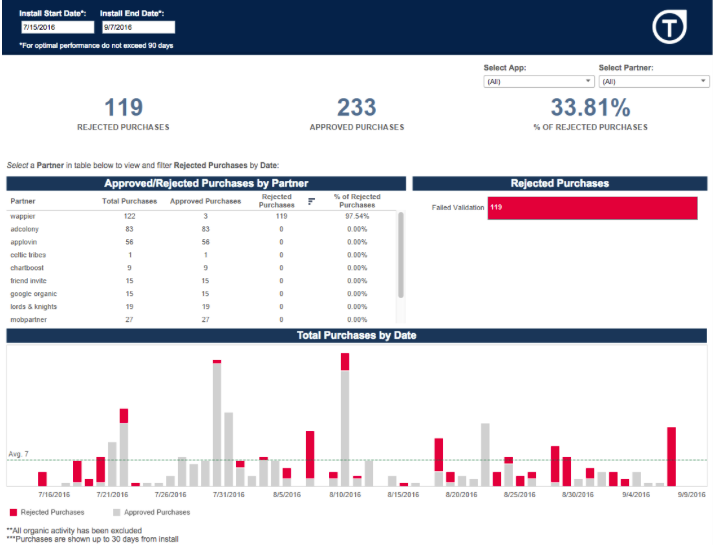
Detecting ad fraud with TUNE Marketing Intelligence
Mobile marketers can avoid ad fraud, however, by using sophisticated analytics to measure and monitor the quality of ad traffic they’re getting. One TUNE customer, Next Games, saved $200,000 on what was in the best case low-quality traffic, and in the worst case fraudulent ad clicks. (See the case study here.)
Smart mobile marketers are careful to prepare for any mobile campaign, and particularly the holiday shopping season, by choosing their mobile advertising partners both on the publisher and ad network sides very carefully.
Beauty beats brains, and other holiday app insights
Mobile marketers and app publishers can prepare as much as they like, but ultimately, consumers vote with their fingers about what apps they’ll use and where they’ll spend their money.
We saw some interesting patterns on Black Friday/Cyber Monday:
1: Beauty beats brains
Apparently, American consumers were more interested in beauty products than in brain games over the holiday weekend.

While app opens in the Beauty category were up 373% on Black Friday and 290% on cyber Monday, games in the Brain category were down 90% on both days. (Games as a whole, by the way, were down 5% on Black Friday and 14% on Cyber Monday.)
Clearly, Americans had important purchases to make, and had limited time to spend on games — especially intellectual ones.
2: News is newsier on holidays, apparently
You might think that with all the Thanksgiving family time, plus all the holiday shopping time, there’d be no time for post-election or pre-inauguration news.
You’d be wrong.

News consumption was way up while we waited for turkey or stood in line, or listened to Uncle Bob talk about the 70s again. News app opens were up 130% on Black Friday and 137% on Cyber Monday on iOS, and up 105% and 111% on Android, respectively.
(Note: all numbers are relative to an average of the prior 21 Fridays or Mondays.)
3: Dating is up slightly
Parents or no parents, visitors or not, there’s always time for dating. And, apparently, a little bit more time on the Thanksgiving long weekend.

Dating app opens were up slightly — 5-6% — on Black Friday and Cyber Monday.
4: You can never have enough photos of grandpa
At family gatherings, cameras (AKA smartphones) are never far away. And never, apparently, unused.

Americans used their photography apps about twice as much as usual on Black Friday and Cyber Monday: 111% more and 72.5% more, respectively. Of course, they might have been just snapping pics of all the products they were planning to purchase.
5: Down with social, business, productivity, and communication
Some things just aren’t fun to do on the holidays … like business. And other things that you usually do on your phone are right in your face.
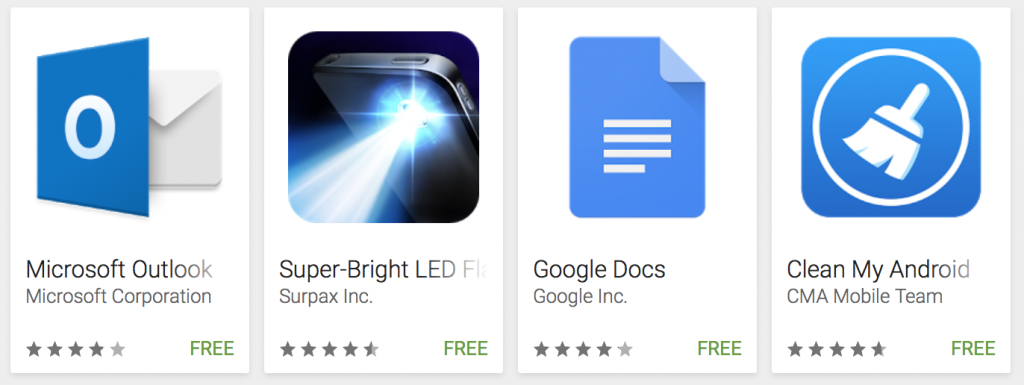
Social categories on iOS and Android were down 12-14.5% on Black Friday, and down again on Cyber Monday. So were communication and productivity categories.
Perhaps not surprisingly, productivity was down 30-36% over the weekend, and communication apps were down more than 65%. The holidays are, after all, about meeting and talking to people IRL.
Clicks vs bricks: one huge iOS/Android difference
There is one place where we saw a huge distinction between iOS users and Android users: where they shopped.
- Android users tended to leave home and go to a physical store
- iPhone users tended to stay home and shop on their mobile or desktop devices

We know this because of what we see in mapping and navigation app usage on Black Friday and Cyber Monday. Android owners opened maps and navigation apps 26.5% more on Black Friday than on the average of the preceding 21 Fridays. On Cyber Monday, Android owners opened maps and navigation apps a significant 37% more than average.
On, iOS, the story is reversed.
iPhone owners opened map apps 15% less than usual on Black Friday and 12% less than usual on Cyber Monday.
The implication is clear: Android owners were much more likely to leave home and go to a physical store, while iPhone owners were much more likely to stay home and letter their fingers do the walking.
Summing it up
Breaking last year’s Black Friday/Cyber Monday mobile sales records didn’t happen by accident. It’s certainly on the right side of history, as we move more into mobile and post-mobile economic frameworks, but it happened because thousands of mobile marketers and publishers prepared, spent, and earned the right to compete for consumers’ dollars.
The lessons are clear … and there’s 24 more days of shopping left before Christmas 2016! And months before other major shopping holidays in 2017.
Which means, if you haven’t already: prepare yourself, your company, and your app now.
Liked this research from TUNE?
Now check out: How many apps do smartphone owners actually install each month?
Author
Before acting as a mobile economist for TUNE, John built the VB Insight research team at VentureBeat and managed teams creating software for partners like Intel and Disney. In addition, he led technical teams, built social sites and mobile apps, and consulted on mobile, social, and IoT. In 2014, he was named to Folio's top 100 of the media industry's "most innovative entrepreneurs and market shaker-uppers." John lives in British Columbia, Canada with his family, where he coaches baseball and hockey, though not at the same time.

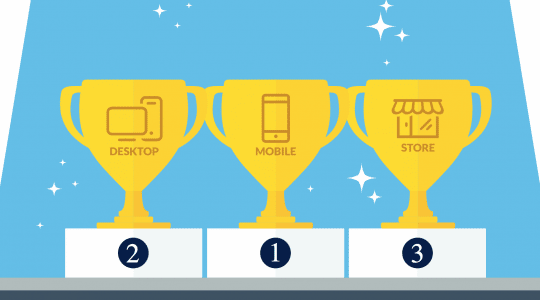


[…] a few weeks ago, Black Friday and Cyber Monday 2016 proved to be the biggest m-commerce weekend in history. And the trend of using mobile devices to […]